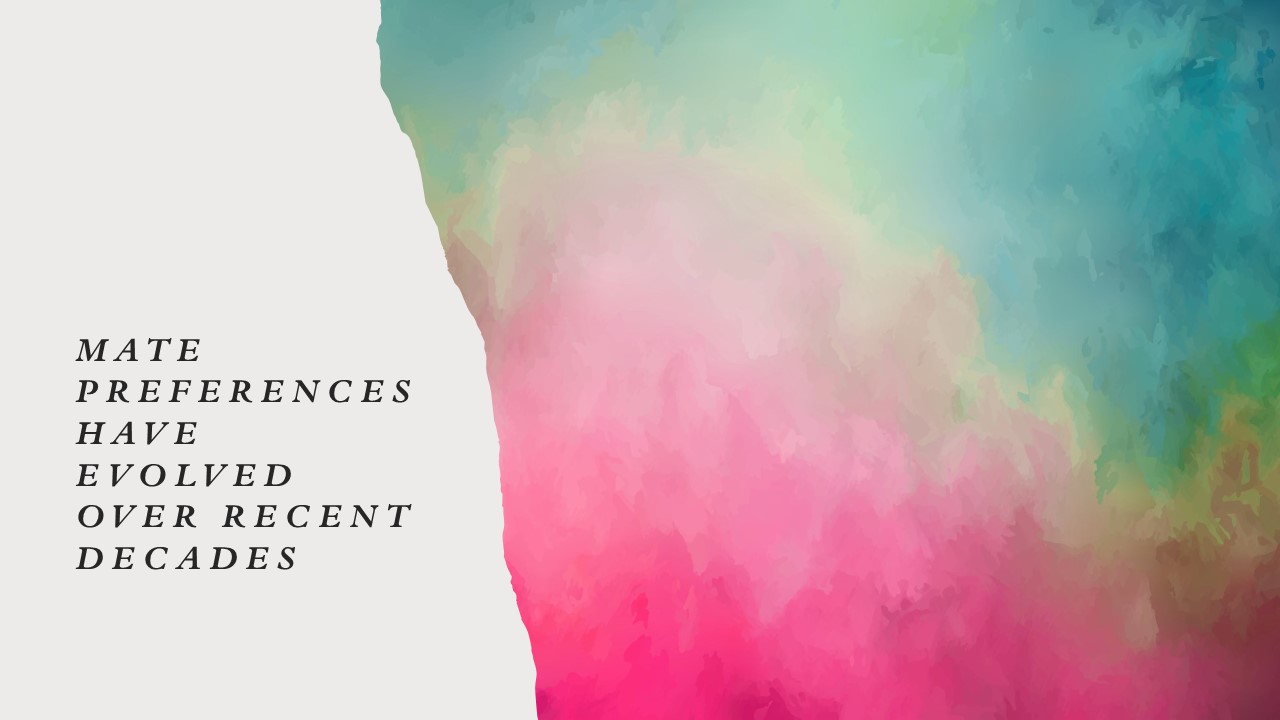Common laypeople’s observations may show that human mate preferences remain consistent over time. Have mating preferences changed over recent decades?
Nevertheless, the changes in society’s cultural norms still affected mating preferences. In many countries, societies have evolved:
- from traditional cultures (with their conservative values)
- to modernized cultures (with higher liberal values and social and gender equality).
People in modernized societies have become less concerned about survival values and more concerned about self-expression values. Several studies have revealed new trends in many modern societies. People have become culturally more emotionally expressive in love.
Cultural Evolution of Modern Mate Preferences in the United States
The comprehensive study by Buss and his colleagues demonstrated that the mating preferences of people in diverse samples of the USA changed throughout a half-century (from 1939 to 1996). The gender differences became less distinctive and showed a tendency to converge. In 1996, the rank of values for different mate qualities changed and showed more similarity. The increased gender equality probably affected those tendencies toward convergence and more equality in mating and romantic partnerships.
Men and women had become more selective in terms of a potential partner’s intelligence, education, and sociability. Also, such qualities as dependable character, maturity, emotional stability, and a pleasing disposition had become highly valued in a prospective partner for both a man and a woman. Men’s desires for similar educational backgrounds and the solid financial prospects of women have risen. However, chastity, neatness, and refinement, on the other hand, lost their mate-value. For men, the value of a woman as a good housekeeper and cook declined. For women, on the other hand, the mating value of a man who was ambitious and hardworking decreased. Mate preferences for what men and women perceive as attractive personality traits for relationships have changed.
Modern Mate Preferences in Different Countries around the World
A broad cross-national study conducted by the BBC also revealed new expectations that men and women had in the early 2000s regarding the qualities of their prospective partners. Among other traits, participants across all countries considered kindness, honesty, dependability, personal values, intelligence, overall good looks, communication skills, and humor as the most important traits. Some gender differences were found. For example, women ranked honesty, humor, kindness, and dependability as more important compared to men’s valuation (Lippa, 2007; Reimers, 2007).
It is worth noting that across nations, the indices of gender equality were closely related to the ranks of preferred traits among both women and men. Thus, increasing gender equality in some societies was most likely the primary driving force behind cultural evolution.
In both women’s and men’s perceptions, the importance of physical attractiveness to a prospective partner was strongly associated with biological factors. In many modern societies, the importance of physical attractiveness was equal for men and women.
Cultural Evolution of Mate Preferences in Modern Brazil
Another example of the cultural evolution of mating preferences can be seen in Brazilian society in the period from the 1980s to the 2010s (Souza et al., 2016).
Over time, love and mutual attraction, kindness and understanding, emotional stability and maturity, education, and intelligence continued to be important for mate preferences. The gender differences were largely the same.
The study of the Brazilian sample of the 2010s, compared with that of the 1980s, still supported the evolutionary interpretation of gender differences in mate preferences. The evolution of cultural values in Brazil during that period had not changed some mating preferences. Results showed that men still preferred younger and physically attractive mates, while women preferred more resourceful partners in terms of good earning capacity, good financial prospects, or other qualities related to resource acquisition, such as education and intelligence, ambition, industriousness, and social status (Souza et al., 2016).
However, researchers found some cultural shifts over time in mating preferences. Men and women expressed more preference for mates with good financial prospects and less desire for a home and children. Modern men in Brazil no longer place value on the chastity and virginity of their partners. This trend was similar to that of other modern societies, such as the United States, China, and India (Souza it al., 2016).
Another societal shift has occurred in Brazilian society, as well as in some other societies. The cultural values of young Brazilians have changed, as reflected in their mate preferences. The value of fertility has declined. Women and men no longer preferred partners who wanted to have children (Souza at al., 2016).
Cultural Evolution of Mate Preferences in India
Modern Indian society is another example of the cultural evolution of love. Cultural changes, which occurred throughout recent decades (about 25 years) in that country, did not change some gender-prevalent mate preferences:
- for men, physical attractiveness and youth in women;
- for women, good financial prospects and social status in men
The changes in mate preferences among both men and women over that period were significant. People increased their preferences for mates who were good housekeepers and cooks, ambitious and industrious people, yet creative and artistic (Kamble et al., 2014).
